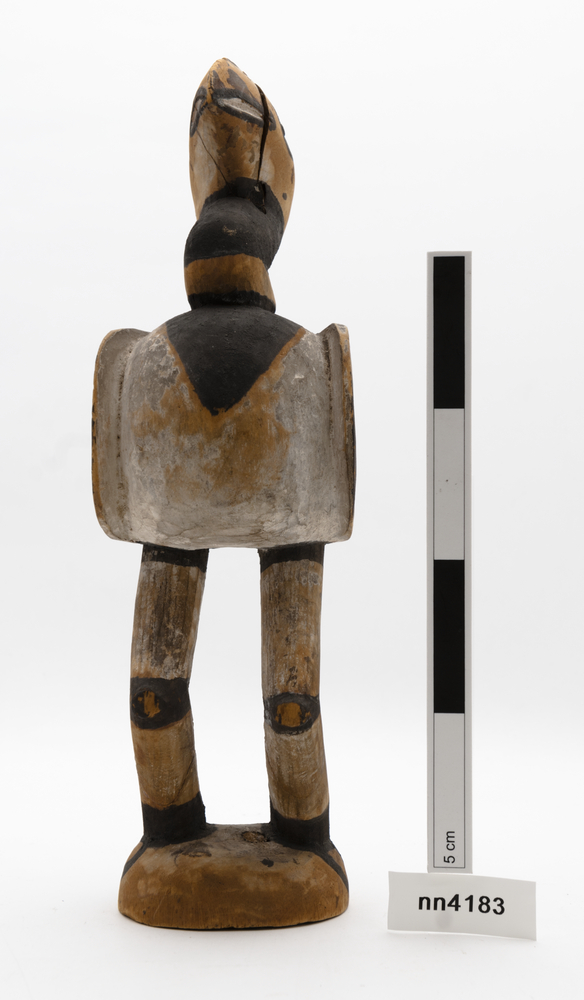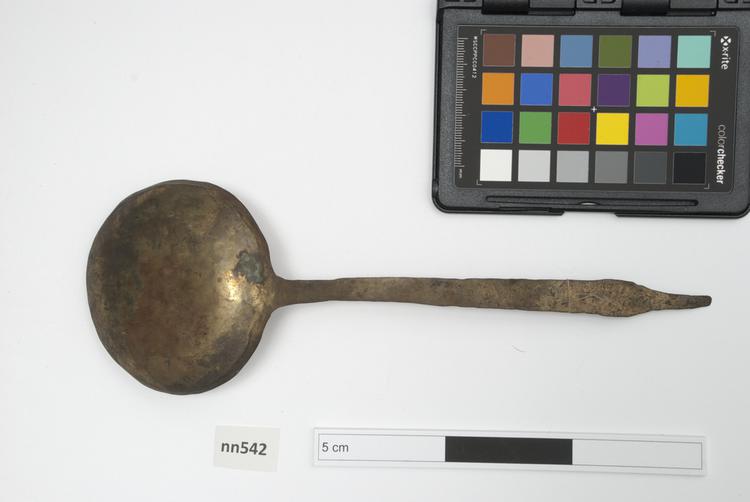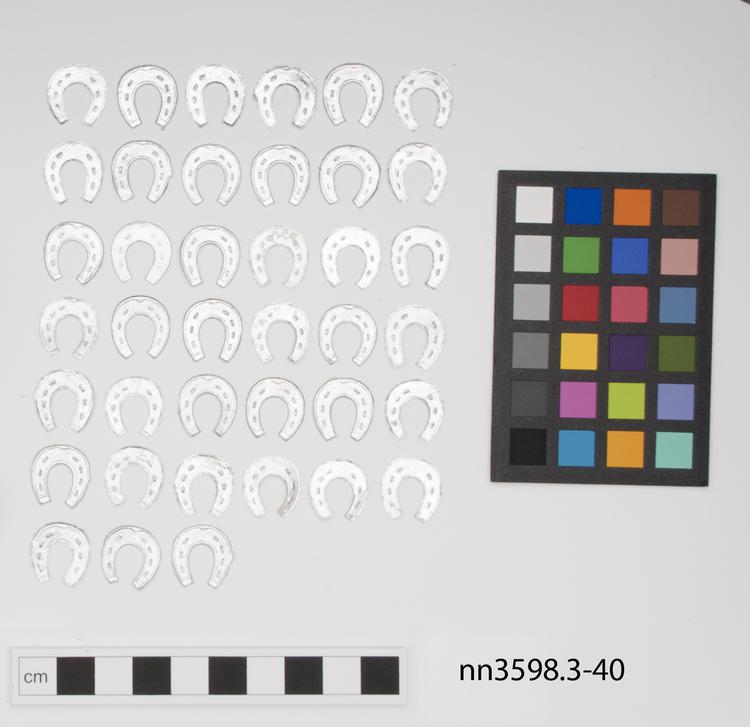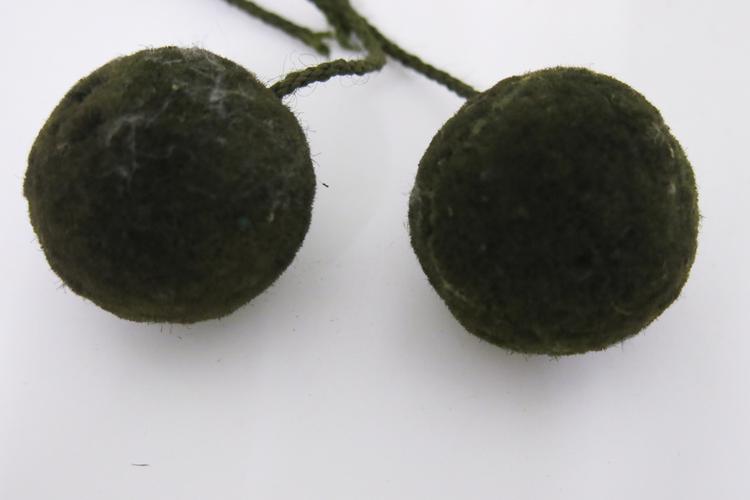The museum has a lot of objects (about 350,000 in fact) but for a variety of reasons there are plenty of objects that remain behind the scenes. I worked with a small group of my fellow Masters students to try and uncover some information about a set of objects, which we selected together.
A brief introduction to these objects
They are a set of three separate models.
One is shaped as an arm, the other two are legs (one’s smaller than the other).
They are smaller than life-size – they range from just under 30cm to 45cm long.
They are made from a dark brown hardwood. Each is covered in intricate tattoo designs that have been carved out and filled in with a white pigment.
They come from the island of Borneo which is separated into Malaysia, Indonesia and Brunei.
The state of Sarawak, which is now a part of Malaysia, was formerly a British colony (this is the region they come from).
They were made in the late 1800s, or before 1914 as that’s when they joined the museum’s collections.
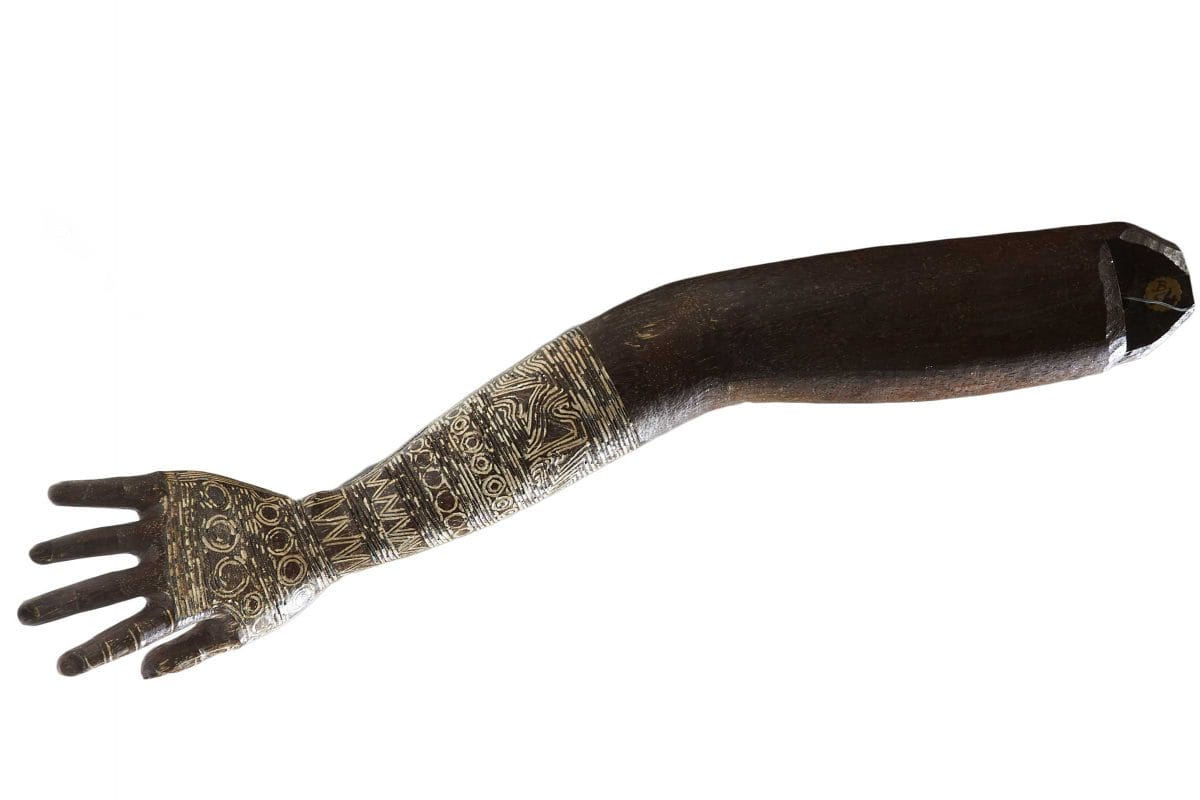
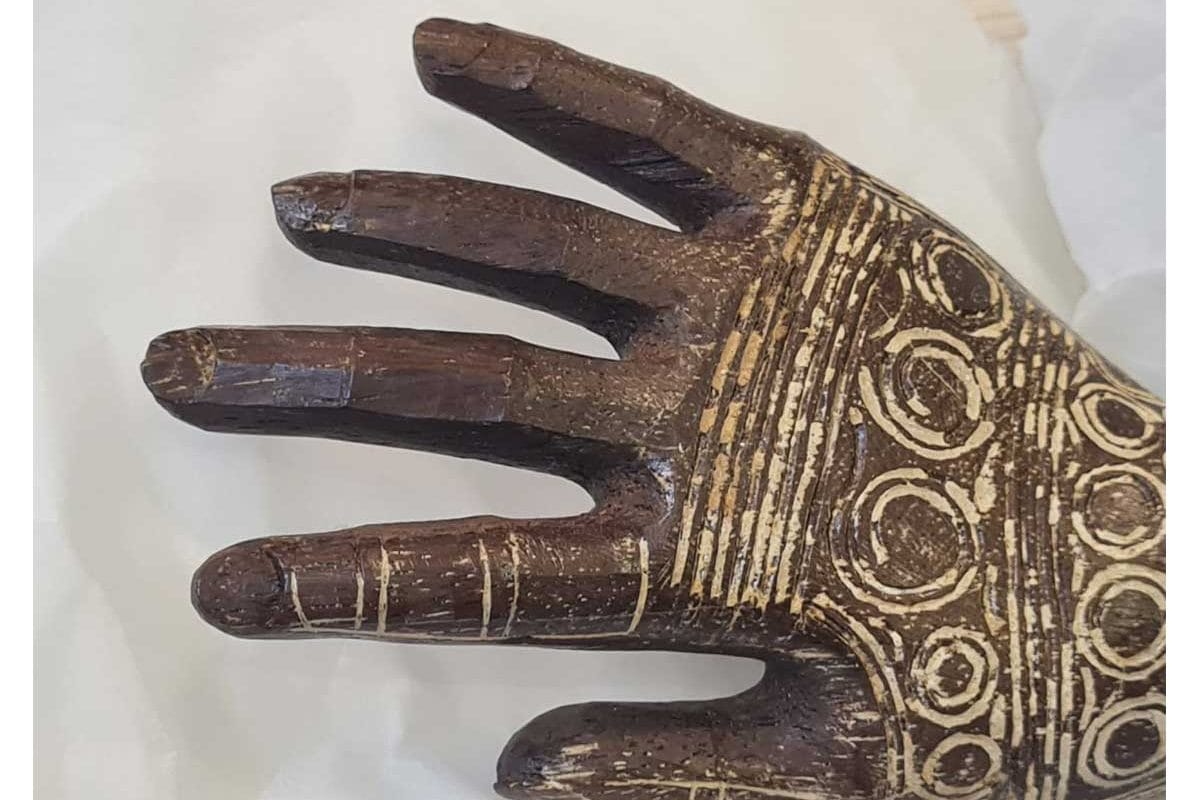
What did this research involve?
Before I give you some details about these objects, I first want to point out where we sourced our information from. You may expect that museums collect a huge amount of related information, and that’s certainly true for some objects. However, we weren’t so lucky (at least, it didn’t seem so at first). As we started this project, the UK was firmly under lockdown, so there was little hope of seeing much material first-hand, especially whilst museums were off-limits.
We could make some guesses about what these objects are, what they were used for before they ended up in the Horniman Museum, and what community they came from. But the museum records that we could access didn’t provide many definitive answers. Instead, we relied on a lot of online searches, which led us to some related historical texts. We also contacted an assortment of people, including contemporary tattoo artists and community members from Sarawak.
We soon realised that the historical source material – that had given us some contextual clues – had to be looked at critically. Sarawak was under British rule throughout the Victorian period. This lens of imperialism is quite visible in the language of the texts written by British and European researchers as they described indigenous communities in Borneo.
Additionally, we found that Henry Ling Roth, the objects’ collector, sold a large collection of tattoo-related items to the Horniman Museum. His anthropological research into forms of body modification was based on theories of social evolutionism. This theory supported white supremacist narratives of the time. Museums were a part of a network that upheld these narratives, as they purchased objects from researchers and collectors to create displays that falsely implied that different cultures across the world could be sorted into hierarchies.
These issues surrounding the colonial histories of these wooden models fuelled our group’s desire to try to understand how they might relate to communities living in Borneo today, over 100 years on from when they were made.
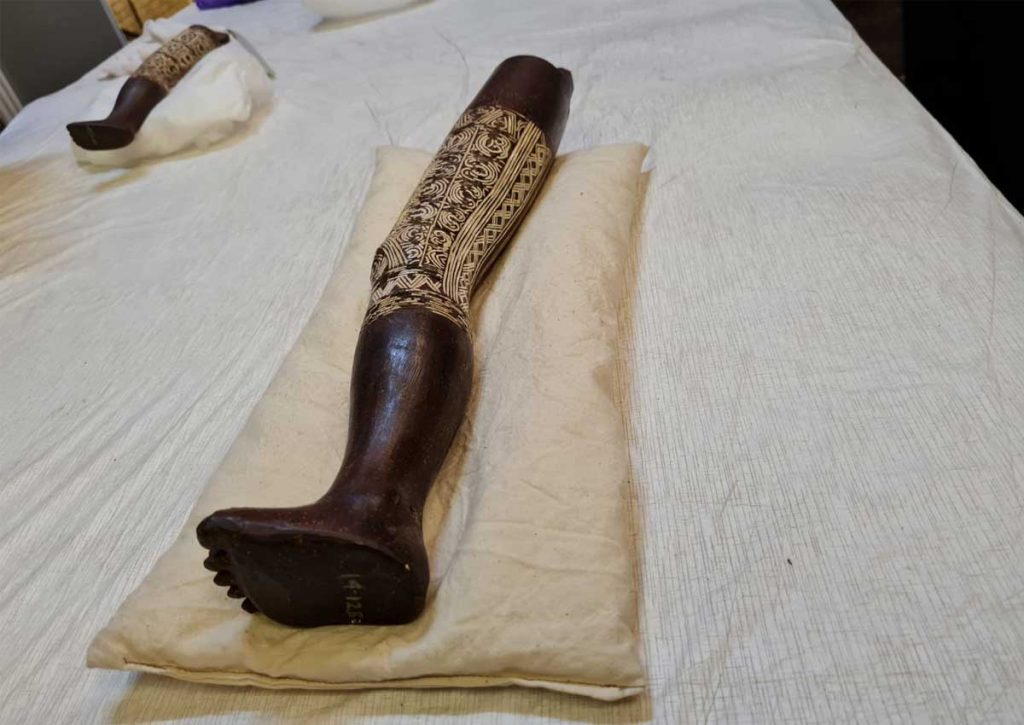
Here’s an overview of what we learnt
What do the objects show?
They represent tattoo patterns, which are likely to originate from the Kayan people, who live along the Baram River in Sarawak, Malaysian Borneo. The models specifically depict patterns for Kayan women (men would have fewer tattoos). The hand-tapping method of tattooing was passed down through the generations along the female line.
What’s their purpose?
This wasn’t very clear to us at first. You might assume that because the models came from a community in Borneo, that they must have had a use for them.
One theory was that they could be a teaching tool for tattoo artists in the community. However, when we thought about it practically, we wondered why the artists would need such models, especially when we found that they used wooden stencils to mark out designs on skin first.
We saw snippets referring to wooden models in historical texts and found examples of similar objects in other museum collections. These pieces of information suggested that they might actually have been made specifically for colonial researchers who were studying cultures in Borneo. For these models, we suspect that this person was Charles Hose, who wrote a book on the topic called ‘The Pagan Tribes of Borneo’.
The models could have functioned as 3D illustrations to give better visual sense of how the tattoo designs appeared on the body, compared to 2D stencils, for example. The models may have been used within research networks or kept as part of a personal collection, which was then later sold to the museum.
Who made the models?
We don’t know who the artist(s) are. Unfortunately the records and texts that we came across do not provide the names or specific details of the person or people who might have carved them.
If you look closely you can see how the models are carefully carved: as well as the intricate patterns, if you look at their anatomy, it demonstrates attention to detail. Even the fingernails and toenails are well-defined.
There are a number of unknowns here that seem to be lost to time, as these details weren’t prioritised by previous owners. For example, we can’t say for certain whether the person or community who made the arm and legs out of wood was different to whoever carved and filled in the patterns.
We did learn that Kayan men at the time did make carvings, including the wooden stencils that were used by the women to mark out tattoo patterns (see collections online for examples). Many other Dayak (indigenous) communities in Sarawak are also known for their carving skills.
What is their relevance to contemporary tattooing in Borneo?
Kayan tattooing has become rare in Sarawak. This was confirmed for us through our group’s discussions with people in Borneo, including contemporary tattoo artists who continue to use traditional hand-tapping methods.
Amongst other factors, missionary activity within the region has largely led to falling numbers of people with tattoos. But whilst tattooing may not be as popular now, the Kayan people in Borneo still continue other long standing traditions including, music, dance, beadwork and carving. Amongst these creative artforms, one example is a musical instrument, which is called a sape’, which is a traditional lute from the Orang Ulu communities from Borneo. Orang Ulu translates to ‘upriver people’ and this includes Kayan and Kenyah communities.
We also have to consider that other Dayak communities in Sarawak, such as the Iban, have revived and continued their tattooing traditions. The contemporary artists are incorporating traditional motifs alongside their own designs to continue this part of their heritage creatively.
What are the models made from?
The Horniman Museum has an in-house conservation team, but this kind of information isn’t always readily available. In some cases, objects may even need to be referred on to external specialists. The records from the collector did not specify the type of wood beyond ‘hardwood’ and the white pigment is also not specified, which leaves things open ended (at least for now).
I was personally quite interested in trying to work out what kind of wood they might be made from because Borneo is sadly famous for rampant deforestation. Our research led us to find that the impacts of the commercial interests in the region are negatively affecting indigenous communities in Borneo today. In turn, this can disrupt their ability to continue their traditional ways of life, including tattoo techniques that have existed for generations.
I found out about a type of wood called Belian (also known as Ulin or Bornean Ironwood), which has been used by Dayak communities in Borneo for a very long time. It’s a useful construction material for their longhouses because of its extreme durability, and resistance to water and pests. It’s a heavy type of wood and this matches the wooden models as they are heavier than they look. Belian has sadly become endangered due to overexploitation. Whether or not the models are made from Belian, this particular example demonstrates how palm oil plantations and logging in Borneo is exhausting natural resources. This is just one type of tree, but many other plants and animals are also being put at risk. And not only that, there are many diverse indigenous communities in Borneo today that rely on the rainforest and these resources.
Deforestation for timber and the clearing of forests for plantations has led to numerous forms of pollution. The shelved Baram Dam project threatened to displace thousands of people from Kayan and Kenyah communities by flooding their homes. All over the world, there are many indigenous communities who are finding themselves disproportionately affected by climate change. The Dayak communities that live in Sarawak’s forests have had to take environmental issues into their own hands, becoming activists to resist future damage to their ancestral lands, and to sustain their traditions such as hand-tapped tattooing.



